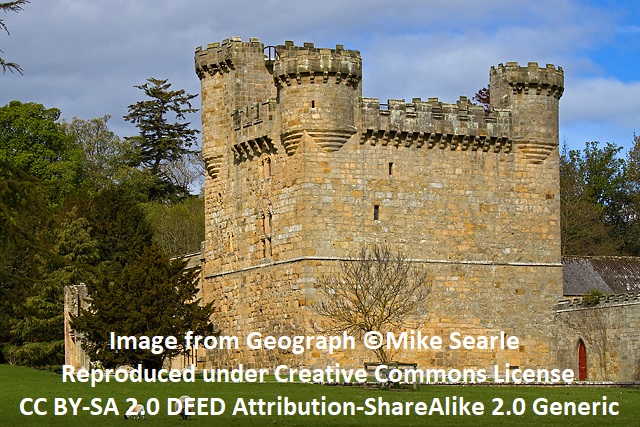Belsay Castle

Belsay Castle Details
Belsay Castle, ruins of a massive 14th century tower of the Middletons with ruins of later mansion alongside.
- Closest To: Belsay, Ponteland
- Access: Chargeable Public Access
- Grid Reference: NZ08487855
Belsay Castle is a large and impressive tower house of the late 14th century with the ruins of a later manor house attached to the side. The tower sits within the grounds of Belsay Hall, both of which are managed by English Heritage and open to the public for a fee, and replaced an earlier strong residence, the nature of which is unknown. The tower sits on eastward facing slopes of Bantam Hill, on the summit of which is an Iron Age fort.
The tower is rectangular in plan and entered through a doorway in the ground floor. This leads to a small lobby area accessing the vaulted cellar, lit by narrow slit windows, a small guard room of sorts, and a winding staircase leading up to the upper floors. The second floor was supported on joists. At three of the corners there are large round turrets, and on the fourth a square turret rising one floor higher, with its own corbelled out round turret leading to the roofwalk. The adjacent house is 17th century but may incorporate older work.
The Middleton family held Belsay in the 13th century, when Sir Richard de Middleton was Lord Chancellor to King Henry III as well as Archdeacon of Northumberland at Durham Cathedral. He had a son Gilbert, who had died by 1291, and a grandson Gilbert. This grandson served in the Scottish wars of Edwards I and II, but was involved in an attempt to murder the Bishop-elect of Durham, imprisoning him and his brother Henry de Beaumont in Mitford Castle for two months. He was convicted of treason for this in early 1318 and executed. As a result Belsay was forfeited, and only returned to the Middletons in 1391 by marriage. After the Union of the Crowns in 1603, Thomas Middleton erected the manor house, adding it to the side of the old tower. This work was completed by 1614, and Thomas used Belsay as his main residence until his later years, when he left Belsay to his son Charles. The house was allowed to fall into disrepair and was restored in the 18th century, although it was abandoned in favour of the new house, Belsay Hall, complete in 1817. The old buildings were part demolished soon after to create a picturesque landscape feature.
English Heritage website for Belsay
Become a supporter of my work to access a more detailed history